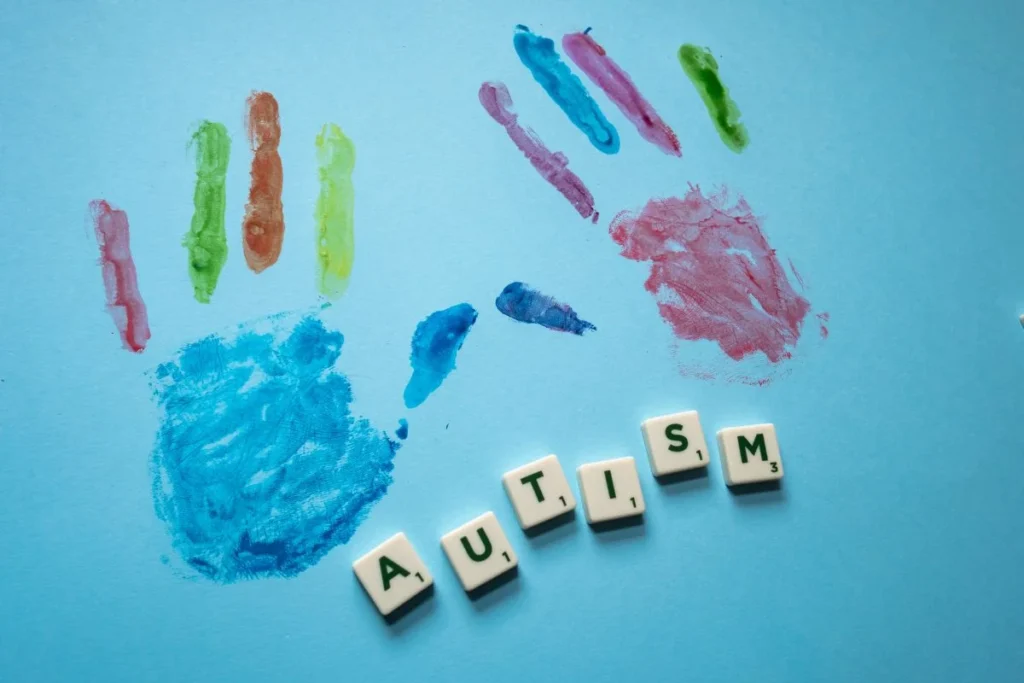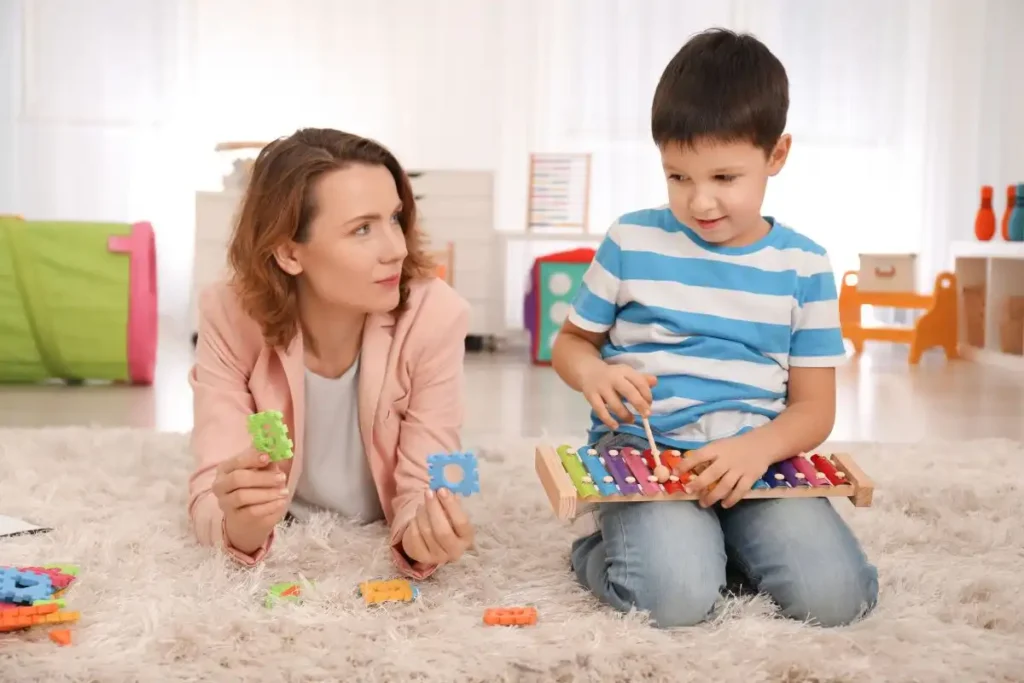Early intervention is crucial for children with ASD. The earlier a child is diagnosed and starts treatment, the better their chances of reaching their full potential. Early intensive behavioral intervention has been shown to improve outcomes in cognition, language skills, adaptive behavior, and social skills.
When evaluating early intervention programs for autism, some key criteria include:
-
Evidence-based practices: Programs should incorporate techniques backed by scientific research and proven results. This includes applied behavior analysis (ABA), developmental models, and strategies based on child development theory.
-
Intensity: More hours per week of therapy leads to better outcomes. Programs providing 15-40 hours per week are considered high quality.
-
Comprehensiveness: Targeting a broad range of developmental skills through coordinated therapies leads to greater improvements. Communication, social skills, self-care, pre-academic skills and more should be addressed.
-
Individualization: The best programs create customized treatment plans tailored to each child’s unique strengths and challenges.
-
Inclusion of parents: Parent education and training is key for reinforcing lessons at home. Quality programs emphasize parent involvement.
-
Qualified staff: Well-trained behavioral therapists, special education teachers, and therapists who have experience with ASD deliver the best results.
This article provides an overview of the top early intervention programs for children on the autism spectrum based on these criteria.
Language and Communication Programs
Children with autism often face significant challenges with communication and language. Many autistic children have delayed language skills, difficulties interacting, trouble understanding nonverbal cues, and challenges expressing themselves. Language and communication deficits can contribute to problematic behaviors as well.
There are several evidence-based early intervention approaches to improve communication for children with autism:
Applied Behavior Analysis (ABA)
ABA utilizes behavioral conditioning techniques to teach communication skills. ABA aims to break down language into manageable steps through prompting, modeling, and rewards. ABA helps autistic children develop verbal speech, sign language, or picture exchange skills. ABA can also address pre-language skills like eye contact, joint attention, and nonverbal communication.
Speech Therapy
Speech therapists work on speech production, usage, and comprehension. They can help autistic children expand their vocabulary, improve articulation, use language more spontaneously, have conversations, and understand spoken language. Speech therapy often uses visual aids, social stories, modeling, and positive reinforcement.
Visual Aids
Many autistic children benefit from alternative communication systems like pictures, symbols, or sign language. Visual aids leverage visual strengths to represent language. Picture Exchange Communication Systems (PECS) allow children to communicate using picture symbols. Sign language and visual schedules can also facilitate communication. Augmentative and alternative communication devices range from simple picture boards to high-tech speech devices.
Early intervention focused on language and communication provides vital support to autistic children. Evidence-based therapies and visual tools help children develop critical language abilities and better connect to the world around them. Strong communication skills pave the way for learning, relationships, and improved quality of life.
Behavioral Programs
Behavioral programs focus on teaching children with autism spectrum disorder (ASD) important life skills while reducing disruptive behaviors. These programs use the principles of applied behavior analysis (ABA) to break down skills into small, achievable steps and provide positive reinforcement as motivation.
Some key skills targeted in behavioral programs include:
Self-care Skills
- Dressing, bathing, grooming, feeding
- Toileting, sleeping, safety skills
- Brushing teeth, washing hands
- Eating a variety of foods
Behavioral therapists use ABA techniques to teach self-care skills step-by-step. For example, they may use hand-over-hand guidance to help a child successfully put on a shirt, then provide praise and a preferred item as positive reinforcement. Over many repeated sessions, the prompts are gradually reduced until the child can dress independently.
Social Skills
- Making eye contact, listening
- Taking turns, sharing toys
- Engaging in pretend play
- Building friendships
- Conversing, understanding nonverbal cues
Behavioral programs often focus on improving social skills through natural play scenarios with peers, therapists, or parents. Skills like greetings, imitation, turn-taking, and sharing are targeted. Verbal prompting, modeling, role-playing, and positive reinforcement help children master appropriate social interactions.
Reducing Disruptive Behaviors
- Tantrums, aggression, self-injury
- Noncompliance, impulsivity, elopement
- Repetitive or stereotyped behaviors
- Emotional regulation
Programs use functional behavior assessments to understand the triggers and functions of disruptive behaviors. Interventions aim to teach replacement behaviors that serve the same need. For example, a child who hits others to escape social interaction may be taught appropriate ways to communicate the need for a break. Data collection helps track progress in decreasing problematic behaviors.
Reinforcing wanted behaviors while preventing reinforcement of unwanted behaviors helps shape positive conduct. Consistency across environments is key.
Occupational Therapy
Occupational therapy (OT) focuses on helping children with autism improve their ability to perform day-to-day activities. OTs work on various skills including:
Fine Motor Skills
Fine motor skills involve using the small muscles in the hands and fingers. Activities to improve fine motor skills include things like buttoning, zipping, cutting, drawing, and writing. OTs may use exercises or special equipment to help strengthen a child’s hands and fingers. They can also identify and provide accommodations for any motor challenges a child faces.
Sensory Integration
Many children with autism struggle to process different types of sensory input. They may be oversensitive or undersensitive to stimuli like sounds, textures, tastes, or touch. OTs use a variety of sensory-based activities to help children better regulate their sensory systems. This includes equipment like swings, trampolines, or crash pads. The goal is to help the child’s brain form more effective sensory processing pathways.
Visual-Spatial Skills
Visual-spatial skills involve interpreting visual information and understanding spatial relationships. OTs work on activities like puzzles, matching games, object assembly, and recognizing facial expressions. These activities can improve a child’s visual perception, hand-eye coordination, and concept development. OT helps a child make sense of the visual world.
OT provides children with autism the support they need to gain independence in important life skills. It facilitates their participation in meaningful everyday activities. Early intervention is key to giving them the best chance of overcoming developmental challenges.
Physical Therapy
Physical therapy focuses on improving gross motor skills, strength, and coordination in children with autism spectrum disorder. Physical therapists use exercises, stretches, and activities to help build muscle tone, balance, and motor planning.
Some common goals of physical therapy include:
-
Improving coordination and control of movements. Children with autism may have low muscle tone, poor balance, and difficulty planning motor tasks. Therapists provide activities to develop these skills.
-
Increasing strength and endurance. Weak core and limb muscles can make daily tasks challenging. Targeted exercises build muscle strength over time.
-
Enhancing motor planning. Many children have difficulty conceptualizing, planning, and sequencing movements. Therapists incorporate motor planning activities to improve these abilities.
-
Improving balance and posture. Balance problems are common and can affect gait and coordination. Therapists use balance beams, balls, and other tools to develop steadiness.
-
Teaching compensatory strategies. Developing ways to adapt movements to complete tasks can help overcome motor challenges.
-
Promoting safety and reducing the risk of injury. Developing motor skills minimizes risks associated with poor coordination.
Regular physical therapy provides children with autism the opportunity to practice and improve essential gross motor abilities. Mastering these skills leads to greater participation in everyday home, school, and community activities.
Play Therapy
Play therapy utilizes play to help autistic children improve social skills and behavior. It is often incorporated into early intervention programs as a way to develop critical skills through play in a structured environment.
Play therapy focuses on several key areas:
-
Joint attention – Encouraging the child to pay attention to the same object or activity as the therapist to improve joint engagement. Activities like rolling a ball back and forth help develop shared focus.
-
Symbolic play – Using toys and imagination to help the child engage in symbolic thinking. Pretend play helps autistic children interact socially and improves language.
-
Social interaction – Having the therapist engage with the child in play to model social behavior like turn-taking. Therapists observe the child during play to identify and improve social difficulties.
Play provides autistic children with an enjoyable way to develop skills like communication, cognition, and self-expression. It utilizes their tendency for routine to improve behavior within a predictable play routine. Play therapy’s goal is to generalize skills from the therapy setting into real-world environments. When incorporated early, it can build critical foundations for social, emotional, and behavioral development.
Parent Education
Parent education is a crucial component of early intervention for autism spectrum disorder (ASD). Parents and caregivers spend the most time with a child, so teaching them therapeutic techniques equips them to provide ongoing intervention at home. Parent education programs focus on:
-
Teaching parents therapy techniques to use at home. Applied behavior analysis, speech therapy, occupational therapy, and other methods can be modeled for parents, who then learn to apply the techniques one-on-one with their child. This helps reinforce therapies and facilitates generalizing skills to the home environment.
-
Managing challenging behaviors. Parents learn strategies to prevent, mitigate, or safely respond to problematic behaviors like tantrums, aggression, or self-injury. Programs teach positive behavior support methods to identify triggers, replace problem behaviors, and encourage positive alternatives.
-
Navigating services. The process of obtaining evaluations, diagnoses, individualized education programs, and services can be complex for parents new to ASD. Parent education provides information and training so families understand their rights and successfully access support systems. Connecting parents with resources, peer support, and advocacy groups is also beneficial.
With proper education, parents become empowered partners in their child’s intervention team. They provide consistency across environments and remain involved in the treatment process as their child’s primary lifelong advocates.
Choosing a Program
When choosing an early intervention program for a child with autism, there are several key factors parents should consider:
Credentials of Staff
-
Look for staff who have advanced degrees and specialized training in autism, such as Board Certified Behavior Analysts (BCBAs), speech-language pathologists, occupational therapists, etc. Avoid programs that rely mainly on entry-level staff.
-
Ensure the program has ample staffing to provide consistent one-on-one support. High staff turnover is a red flag.
-
Ask about required background checks for all staff who work directly with children.
Individualized Plans
-
Programs should develop customized treatment plans tailored to each child’s unique needs, challenges, and strengths. No two children are exactly alike.
-
Plans should outline specific goals across all areas of development and strategies to achieve them. Goals should be reviewed and updated regularly as the child progresses.
Data Tracking
-
Quality programs use data tracking to measure each child’s progress on goals and determine if interventions are working or need adjustment. Ask how often data is collected and reviewed.
-
Data tracking and progress monitoring should be shared with parents regularly. The lack of data is a concern.
Parent Involvement
-
Parents are a child’s first and most important teachers. Programs should provide parent training so interventions can continue at home.
-
Staff should maintain close communication with parents through meetings, observations, daily reports, etc. Parents should feel like valued team members.
-
Parent satisfaction and feedback should be regularly collected and addressed by the program.
Costs and Insurance
The costs of early intervention services can vary widely depending on the types of therapies, frequency, and duration of treatment. Here are some general guidelines around costs and coverage:
Average Costs
- Speech therapy: $50-150 per hour
- Occupational therapy: $50-150 per hour
- Physical therapy: $50-150 per hour
- Applied behavior analysis (ABA): $15,000-50,000 per year
- Play therapy: $30-150 per hour
Costs are usually highest in the first 2 years when therapy may be more intensive. As children progress, costs tend to decrease as therapy needs decline.
Grants and Scholarships
Some organizations provide grants and scholarships to help cover therapy costs for families in need:
- Local autism societies often have financial assistance programs.
- Non-profits like Autism Speaks provide $500 mini-grants to qualifying families.
- Child development organizations like Easter Seals sometimes assist with therapy costs.
Insurance Coverage
Most private health insurance plans cover some autism therapies, often with caps on annual spending. Common coverage includes:
- Speech therapy – usually 20-40 visits per year.
- Occupational therapy – typically 20-40 visits per year.
- Physical therapy – around 20 visits per year.
- ABA therapy – up to $30,000-$50,000 per year.
Public insurance like Medicaid covers autism services with no caps in most states. States are required to cover medically necessary therapies under EPSDT rules.
Conclusion
Early intervention programs for autism have the best chance of success when started at a young age and selected based on a child’s individual needs and family circumstances. Ultimately the best overall programs pair communication, occupational, and behavioral support with play therapy and ongoing parent education.
Starting intervention early, as soon as autism is suspected, can have the greatest developmental impact. While early intervention does not cure autism, it allows children to build critical communication, motor, sensory, and social skills that will benefit them throughout life. Therapies that begin before age 3 lead to the most significant improvements in skills compared to those that start later.
While choosing the right program is key, consistency and duration of therapy are equally important. Most experts recommend 25-40 hours per week of intensive therapy for at least 2 years. One-on-one therapy often yields faster progress, but group programs with parent training can be effective. Regardless of program type, ongoing support will be necessary to address evolving challenges at home and school.
The autism journey is a marathon, not a sprint. With early, patient, and persistent intervention most children can gain skills to communicate, regulate behavior, interact socially, and live fulfilling, independent lives. An individualized program tailored to the child paired with committed family support offers the best chance at success.







